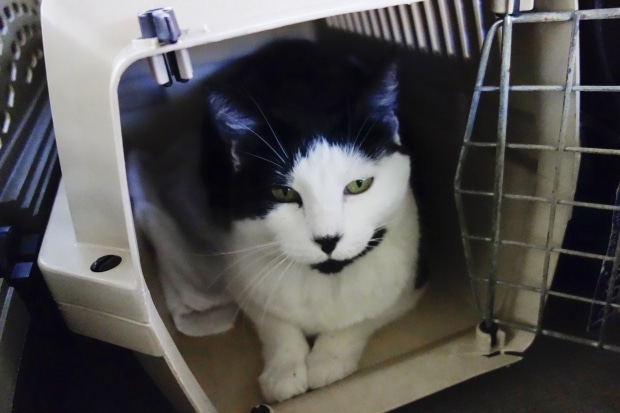Traveling with your cat may seem like a daunting idea, but it can be done!
There are a few things you should do to ensure the safety and well being of your cat when traveling. The first of which is to never travel, even short distances, with your cat loose in the car. Cats can get under your feet or climb on you and cause visual or movement issues. Be sure to travel with your cat safely in a cat carrier.
Short Distances – Use a cat carrier (see section on getting your cat used to a cat carrier).
Long Distances – Get a large dog crate (the bigger the better) and include a litterbox, a cat bed and some toys, as well as food and water (ensuring the water bowl is secure so as not to tip over on rough roads and get your cat wet). Just like when you are traveling a short distance to a veterinarian’s office for example, play classical music, or use Feliway to help keep your cat calm and relaxed. Continue to give your cats treats to reinforce that the carrier or kennel and riding in the car is a good thing.
Remember to never open your kennel/cage door unless you are sure you have the cat secured inside a house/room. Keep in mind that traveling is stressful on a cat no matter what and you don’t want to open the car door, open the kennel door and have your cat escape out onto the road or unfamiliar territory. One way to ensure this is to have a collar/tags on your cat and a cat harness and reach into the kennel and clip a leash onto the harness before you open the door. This way, you will have control of your cat the minute you open the door. It is not a good idea to leave the leash on the cat in the crate/carrier. You don’t want the cat to get tangled in it, even around the neck, which could hurt or even kill your cat.
A few other tips:
- Be sure to have current photos of your cat from different angles so that just in case they escape so that you can use them on ‘lost posters’ or at the shelter or neighborhood in which you lost your cat.
- Have vaccinations (including rabies) current when traveling and have your veterinarian records with you.
- Microchip your cat. Even with a collar and tags your cat can slip them if caught – a microchip is a permanent form of identification. Ensure you have your microchip registered.
- Outfit your pet with a secure, but break-a-way, collar and identification tags. (A break-away collar breaks apart if your cat gets caught by it, preventing strangulation.)
- If your cat is on medication, take it with you; and include some extra days worth just in case something detains you from returning home on time as planned.
- Take your cats food with you so you can keep the cat on the same diet. Just like with medications, take extra just in case. Include treats for positive reinforcement.
- Put a t-shirt or pillow case or something that smells like you in the crate/carrier with the cat when traveling.
- If they have a favorite toy, take it with them.
Source: ARL – Animal Rescue League of Iowa, Inc. 2018 – https://www.arl-iowa.org/
